\’Opinion One\’: Medical cannabis: Allow GPs to prescribe as part of national trial, review urges (BMJ 2022; 377 doi: https://doi.org/10.1136/bmj.o1567 Published 27 June 2022)
GPs should be allowed to prescribe medical cannabis as part of a national trial, recommends a review of policy in the legal cannabinoid sector.1
The review by Christopher Hodges, emeritus professor of justice systems at the Centre for Socio-legal Studies at the University of Oxford, calls for a new regulatory framework for the sector to “turbocharge UK cannabinoid innovation.”
He said, “It is no longer wise or sustainable for the government to continue to take a distanced, disinterested, or laissez faire attitude to the sector as a whole, as it has done since the cannabis sector’s inception.”
The report, commissioned by the Centre for Medicinal Cannabis and the Association for the Cannabinoid Industry, says that in the area of consumer cannabinoids and CBD there has been too little regulation and that tighter rules are needed to safeguard the consumer and build up public trust. But in the area of medical cannabis it argues that regulations are too onerous and restrictive in some areas and too lax or entirely absent in others.
The review makes 20 recommendations, including calling on the government to set up a single steward authority to govern and guide the entire sector, at arm’s length from ministers.
It also calls for the creation of a national patient registry for all cannabis based medicines prescribed in the UK so that real world evidence can be built up. It also calls for a single formulary to provide doctors with an up-to-date list of cannabis based medicines.
A survey of 1500 people given in the report found that two thirds believe GPs should be allowed to prescribe medical cannabis. And 63% of respondents would be supportive if a family member was taking medicinal cannabis to dealt with a health condition, with only 8% saying they would be somewhat or very opposed to it.
\’Opinion Two\”: Why that is a Bad Idea! A Professor Responds.
I note the recent article by a legal academic on streamlining cannabis regulation and making the proposed new body “independent of ministers.” Unsurprisingly this report was paid for by the cannabis industry almost certainly including with dollars from notorious USA philanthropists, and was written by a legal academic.
The report failed to mention recent major studies linking cannabis with 44 congenital anomalies in USA 1 including limblessness 2. Just like thalidomide.
The report failed to mention recent major studies linking cannabis with 89 congenital anomalies in Europe 3. The signal for limblessness in Europe is even stronger than that in USA 4.
The report failed to mention recent major studies linking cannabis with many cancers in USA 5-7.
The report failed to mention recent major studies linking cannabis with many cancers in Europe 3.
The report failed to mention that cannabis is the primary driver of the exponentially rising autism epidemic in USA 8.
Not mentioned was the 30% rise in cellular aging just documented by the most modern epigenomic age estimators available 9. Cannabis has a heavy epigenetic footprint — which means it is endangering at least the next four generations 10-12.
It has been shown that 59% of the human genome is directly involved in cannabis genotoxicity 13. Exponential effects are not only seen routinely in the laboratory but have now been observed epidemiologically in patterns of population ill health 14. Probably all cannabinoids are involved including cannabidiol and Δ8THC 1 5-7 15-17.
Alone, each of these lines of evidence is a deal breaker.
Together these three strands of evidence — cannabinoid teratogenicity, cannabinoid carcinogenicity and cannabinoid accelerated aging – are rock solid proof of highly clinically significant cannabinoid-induced genotoxicity far exceeding that from tobacco and alcohol combined 1 3.
This evidence has now been formally presented to the Home Affairs Select Committee on Drug Abuse. At the time of writing their report is awaited.
San Francisco Bay has been called “the most invaded marine system on the planet” 18. The California Water Board acknowledges and attempts to regulate the quality of water effluent from cannabis farms 19. This clearly points to major contamination of the water table and marine ecology and environment by weed growers. Unsurprisingly northern California is host to not only tens of thousands of cannabis farms but is also a hot spot for autism and gastroschisis 20.
In the same way large cannabis farms in France obviously contaminate the French water table and are probably used as cattle feed. In these areas cows are born without legs and the rate of human babies born without limbs is 60 times above background 21-23. A similar thing appears to be operating in Melbourne, Australia which leads the world in both amelia (no limbs) and phocomelia (flipper limbs) and has long been surrounded by cannabis farms 24 25.
Public health is too important to entrust it to commercial growers of weed. Ignorance is too costly to endanger public health.
Not since 1957 has a known genotoxin been marketed for profit. That drug was thalidomide. Thalidomide is the reason we have the modern drug regulatory system. Those who will not learn the lessons of history are condemned to repeat them. The UK made that dreadful mistake 65 years ago with thalidomide. It need not do so again.
The cannabis industry must be held to account internationally in the same way that Distillers was held to account globally for thalidomide. Except the fallout from weed is so much worse. Thalidomide caused 33 birth defects — cannabis 89. Thalidomide affected the exposed generation. Cannabis epigenotoxicity is at least multigenerational. And cannabis is obviously dynamite for brain development in adolescents, infants and babies in utero. Genotoxicity is not an acceptable or exportable public health program.
United Kingdom can and should lead the way and sound the trumpet clarion-like across Europe the epidemiology of whose multiple devastating and profoundly indicting congenital anomaly epidemics is presently being increasingly exposed for all the world to see in high ranking medical journals 8.
Professor A.S. Reece
References
- Reece AS, Hulse GK. Geotemporospatial and causal inference epidemiological analysis of US survey and overview of cannabis, cannabidiol and cannabinoid genotoxicity in relation to congenital anomalies 2001—2015. BMC Pediatrics 2022;22(1):47-124. doi: 10.1186/s12887-021-02996-3
- Reece AS, Hulse GK. Epidemiological association of cannabinoid- and drug- exposures and sociodemographic factors with limb reduction defects across USA 1989—2016: A geotemporospatial study. Spatial and Spatio-temporal Epidemiology 2022;41:100480-90. doi: https://doi.org/10.1016/j.sste.2022.100480
- Reece A.S., Hulse G.K. Cannabinoid- and Substance- Relationships of European Congenital Anomaly Patterns: A Space-Time Panel Regression and Causal Inferential Study. Environmental Epigenetics 2022;8(1):1-40.
- Reece A.S., Hulse G.K. Congenital Limb Anomalies in Europe as Epidemiological Patterns of Cannabis- and Substance- Exposures: Geospatiotemporal and Causal Inferential Study. Manuscript Submitted 2022
- Reece A.S., Hulse G.K. Geotemporospatial and Causal Inferential Epidemiological Overview and Survey of USA Cannabis, Cannabidiol and Cannabinoid Genotoxicity Expressed in Cancer Incidence 2003—2017: Part 1 — Continuous Bivariate Analysis. Archives of Public Health 2022;80:99-133. doi: doi.org/10.1186/s13690-022-00811-8
- Reece A.S., Hulse G.K. Geotemporospatial and Causal Inferential Epidemiological Overview and Survey of USA Cannabis, Cannabidiol and Cannabinoid Genotoxicity Expressed in Cancer Incidence 2003—2017: Part 2 — Categorical Bivariate Analysis and Attributable Fractions. Archives of Public Health 2022;80:100-35. doi: doi.org/10.1186/s13690-022-00812-7
- Reece A.S., Hulse G.K. Geotemporospatial and Causal Inferential Epidemiological Overview and Survey of USA Cannabis, Cannabidiol and Cannabinoid Genotoxicity Expressed in Cancer Incidence 2003—2017: Part 3 — Spatiotemporal, Multivariable and Causal Inferential Pathfinding and Exploratory Analyses of Prostate and Ovarian Cancers. Archives of Public Health 2022;80:100-36. doi: doi.org/10.1186/s13690-022-00813-6
- Reece A.S., Hulse G.K. Impact of Converging Sociocultural and Substance-Related Trends on US Autism Rates: Combined Geospatiotemporal and Causal Inferential Analysis. European Archives of Psychiatry and Clinial Neuroscience 2022;19(13):7726-52.
- Allen JP, Danoff JS, Costello MA, et al. Lifetime marijuana use and epigenetic age acceleration: A 17-year prospective examination. Drug and Alcohol Dependence 2022;233:109363. doi: https://doi.org/10.1016/j.drugalcdep.2022.109363
- Murphy SK, Itchon-Ramos N, Visco Z, et al. Cannabinoid exposure and altered DNA methylation in rat and human sperm. Epigenetics 2018;13(12):1208-21. doi: 10.1080/15592294.2018.1554521 [published Online First: 20181218]
- Szutorisz H, DiNieri JA, Sweet E, et al. Parental THC exposure leads to compulsive heroin-seeking and altered striatal synaptic plasticity in the subsequent generation. Neuropsychopharmacology 2014;39(6):1315-23. doi: 10.1038/npp.2013.352
- Watson CT, Szutorisz H, Garg P, et al. Genome-Wide DNA Methylation Profiling Reveals Epigenetic Changes in the Rat Nucleus Accumbens Associated With Cross-Generational Effects of Adolescent THC Exposure. Neuropsychopharmacology 2015;40(13):2993-3005. doi: 10.1038/npp.2015.155
- Reece A.S., Hulse G.K. Epidemiological Overview of Multidimensional Chromosomal and Genome Toxicity of Cannabis Exposure in Congenital Anomalies and Cancer Development Scientific Reports 2021;11(1):13892-912. doi: 10.10389/s41598-021-93411-5
- Society for Prevention Research. Roundtable on \”Is Cannabis Legalization Increasing Birth Defects and Cancers?\” USA: Society for Prevention Research; 2022 [Available from: https://deakin.zoom.us/rec/share/XkFRt18GM5zh-XOOYKIb264J_twM1nHW_WuS908ESq3O0C34EFFzPA66r0VV2VIU.mcaSoNiICWMnU4pi accessed June 28th 2022 2022.
- Reece A.S., Hulse G.K. Congenital Anomaly Epidemiological Correlates of Δ8THC Across USA 2003-2016: Panel Regression and Causal Inferential Study. Environmental Epigenetics 2022;In Press
- Reece AS, Hulse GK. Epidemiology of Δ8THC-Related Carcinogenesis in USA: A Panel Regression and Causal Inferential Study. International Journal of Environmental Research and Public Health 2022;19(13):7726-52.
- Nahas GG, Morishima A, Desoize B. Effects of cannabinoids on macromolecular synthesis and replication of cultured lymphocytes. Federation proceedings 1977;36(5):1748-52. [published Online First: 1977/04/01]
- Smithsonian, MarineGEO, Tannenbaum Marine Observatories Network. San Francisco Bay, California, Tiburon, California, USA: Smithsonian; 2022 [Available from: https://marinegeo.si.edu/san-francisco-bay-california accessed June 28th 2022 2022.
- State of California. California Water Boards: State Water Resources Control Board: Water Boards Cannabis Cultivation 2022 [Available from: https://www.waterboards.ca.gov/water_issues/programs/cannabis/ accessed June 28th 2022 2022.
- Reece AS, Hulse GK. Gastroschisis and Autism-Dual Canaries in the Californian Coalmine. JAMA Surg 2019;154(4):366-67. doi: 10.1001/jamasurg.2018.4694 [published Online First: 2019/02/07]
- Agence France-Presse in Paris. France to investigate cause of upper limb defects in babies. The Guardian 2018. https://www.theguardian.com/world/2018/oct/21/france-to-investigate-cause-of-upper-limb-defects-in-babies (accessed 3rd November 2018).
- Gant J. Scientists are baffled by spatter of babies born without hands or arms in France, as investigation fails to discover a cause. Daily Mail 2019; Sunday 14th July https://www.dailymail.co.uk/news/article-7242059/Scientists-baffled-babies-born-without-hands-arms-France-probe-fails-discover-cause.html (accessed 14th July 2019).
- Willsher K. Baby arm defects prompt nationwide investigation in France. Guardian 2018. https://www.theguardian.com/world/2018/oct/31/baby-arm-defects-prompt-nationwide-investigation-france (accessed 3rd November 2018).
- Bermejo-Sanchez E, Cuevas L, Amar E, et al. Amelia: a multi-center descriptive epidemiologic study in a large dataset from the International Clearinghouse for Birth Defects Surveillance and Research, and overview of the literature. Am J Med Genet C Semin Med Genet 2011;157C(4):288-304. doi: 10.1002/ajmg.c.30319 [published Online First: 2011/10/18]
- Bermejo-Sanchez E, Cuevas L, Amar E, et al. Phocomelia: a worldwide descriptive epidemiologic study in a large series of cases from the International Clearinghouse for Birth Defects Surveillance and Research, and overview of the literature. Am J Med Genet C Semin Med Genet 2011;157C(4):305-20. doi: 10.1002/ajmg.c.30320 [published Online First: 2011/10/18]

